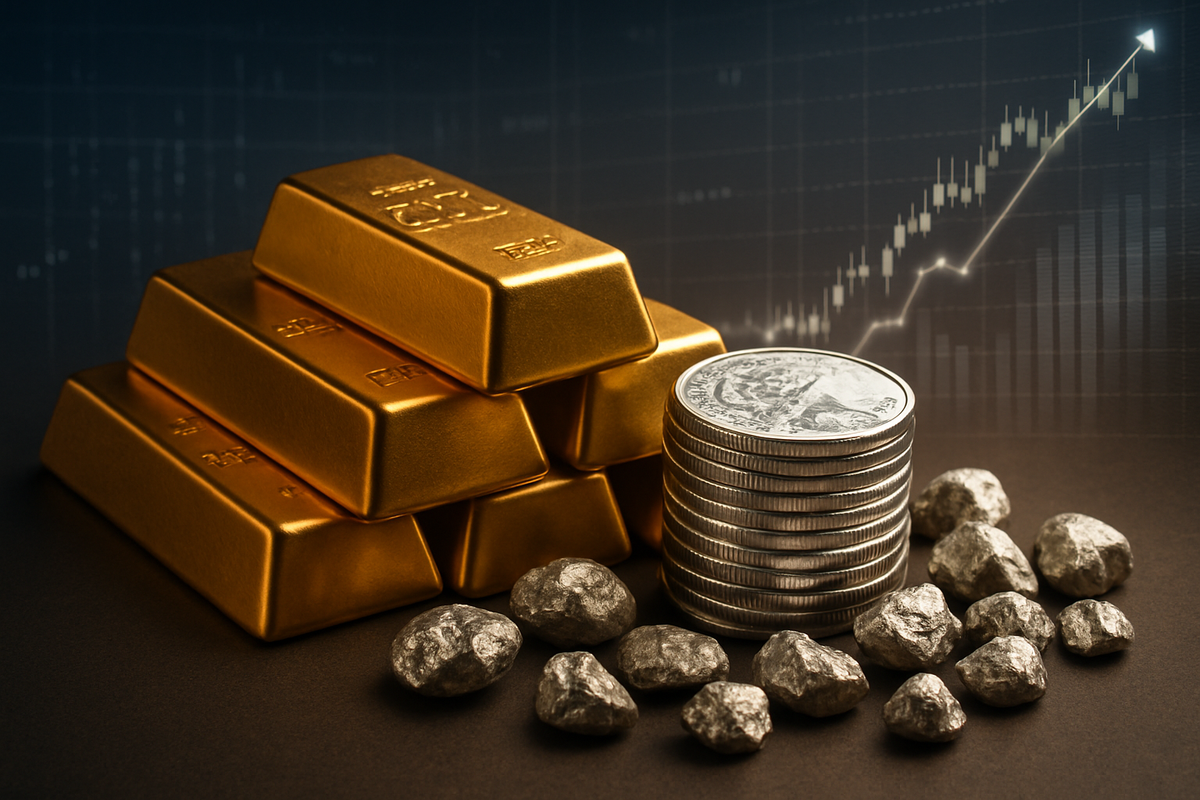Economic Policy Brief #90 | William Campbell | October 2025
Commodity metals are raw metals that are globally standardized and traded in bulk. They are typically categorized as industrial (base) metals (copper, aluminum, zinc), or precious metals (gold, silver, platinum). Precious metals are valued for investment and jewelry, while base metals are essential for industrial use and manufacturing. This Brief seeks to explain the ways in which fluctuations in demand influence the pricing and availability of commodity metals. In addition to commodity metals, rare earth minerals play an important role in various technologies but are not globally standardized. We will discuss these in an upcoming brief.
It is anticipated that the demand for most commodity metals will soon increase due to the growth of AI and renewable energy. Commodity metal demand forecasts need to be examined to understand the near and long-term effects of market shifts and their policy implications. For commodity-producing countries, if demand is to fall short of expectations, it would mean revenue shortfalls, which require austerity measures. Policymakers rely on frameworks that allow countercyclical responses to market dynamics, but if they are not aware of how to alleviate price volatility, they cannot combat inflation or encourage economic growth. To mitigate supply-demand imbalances, policymakers need some insight into commodity futures.
Demand for industrial metals is affected by indicators of economic growth, such as technological advancement and infrastructure development. Preparation for an upturn in demand has caused many industrial metals to be in oversupply. Aluminum is necessary for solar and wind power, energy storage, and for the bodies of electric vehicles (EVs). Cobalt is a necessary component for building lithium-ion batteries for EVs and energy storage. Copper is the most cost-effective and efficient industrial metal for conducting heat and electricity. Without it, data centers would be much less viable, and the transmission of electricity necessary for solar and wind power would be dampened. Iron ore is a necessary input to produce steel, which is used to create infrastructure for most green energy sources. Lithium is the key component of rechargeable lithium-ion batteries, which are used to power electric cars and clean energy devices. Nickel is important for high density energy storage and strengthening materials used in clean energy technologies. Zinc is used to galvanize steel, strengthening infrastructure used for solar and wind power collection.
TABLE 1: The Relationship Between Supply and Demand for Industrial Metals
Aluminum→Market Deficit→40% demand increase by 2030
Cobalt→Oversupply→Market deficit by 2030→Demand increase
Copper→Market Deficit→24% demand increase by 2035
Iron Ore→Oversupply→Demand increase, but only for high-quality ores
Lithium→Oversupply→Inelastic producers outpace demand→Market deficit by 2030
Nickel→Oversupply→Market rebalancing will create a market deficit in the 2030s
Zinc→Oversupply→Slow demand increases starting in the 2040s
Precious metals other than gold have more volatile demand. Silver, platinum, and palladium exist in smaller markets with higher expenditures per purchase. Gold is comparatively more stable due to its larger market and universal recognition. It is capable of conductivity needed for quick and efficient transmission of data while being malleable enough to coat circuit board components. Gold is seen as a safe investment during economic uncertainty, in turn facing price slumps as investors sell for profit. The market for gold is too large to accurately predict changes in specific industries.
Palladium is used in advanced memory storage, so its usage in AI technology could increase its sensitive market value. Palladium’s growth over the next two decades is due to hydrogen synthesis, which makes analysis difficult. Platinum is useful for creating sensors to maintain conditions for AI operations, such as gauging temperature spikes. Silver demand is projected to increase in the 2030s due to its necessity for solar energy collection. Its high conductivity and unmatched optical reflectivity make it unparalleled.
TABLE 2: The Relationship Between Supply and Demand for Precious Commodity Metals
Gold→Market Deficit→40% demand increase by 2030
Palladium→Oversupply→Market deficit by 2030→Demand increase with unsure impact
Platinum→Market Deficit→24% demand increase by 2035
Silver→Market Deficit→170% demand increase by 2030
Engagement Resources
- Council on Foreign Relations | David Hart | The World Will Miss U.S. Investment in Energy RD&D
- Everstream Analytics | Commodity Outlook: Supply Chain for Metals
- Reuters | David Russel | Critical minerals are stuck between demand hopes and oversupply reality
- S&P Global | Katya Bouckley | Nickel Market Could Stay in Oversupply until 2030
- World Bank | Commodity Markets

